This article was medically reviewed by Sarah Gehrke, RN, MS. Sarah Gehrke is a Registered Nurse and Licensed Massage Therapist in Texas. Sarah has over 10 years of experience teaching and practicing phlebotomy and intravenous (IV) therapy using physical, psychological, and emotional support. She received her Massage Therapist License from the Amarillo Massage Therapy Institute in 2008 and a M.S. in Nursing from the University of Phoenix in 2013.
This article has been viewed 36,131 times.
When it comes time to choose a walker or rollator, you will have many options to pick from. Not only do walkers and rollators serve different purposes, but they come equipped with a variety of features. As a result, making a definitive choice could be an overwhelming experience. Fortunately, by educating yourself about the basics of walkers and rollators, learning about important features, and consulting with professionals, you'll be better equipped to choose a mobility aid.
Steps
Choosing the Basics of Your Mobility Aid
-
1Choose a walker if you need stability. Walkers are a basic form of mobility aid that provides the user with support in moving. Walkers come in many sizes, shapes, and have a wide variety of features. Some may even have wheels, but the wheels won't generally rotate.
- Walkers most often have aluminum frames, are height adjustable, and require you to lift it to move it. Thus, make sure you have some upper body strength before picking a walker.
- Walkers are best for people who may be unstable and need to rest a lot of weight on the device.[1]
-
2Decide on a rollator if you need support standing up. Rollators, like walkers, are mobility devices that aid people with a variety of problems that impact their ability to walk independently. However, rollators are geared toward people with different needs and abilities.
- Rollators are very much like walkers, but have wheels that allow them to be moved without lifting.
- Rollators often have features like a seat bench, basket, or even handbrakes.
- Rollators come with two wheels, three wheels, or four wheels.
- Two-wheeled rollators are good for people who need help with balance and might use it to support a little bit of their weight.
- Three or four wheeled rollators are best for people who need help with balance but won’t rely on it to support their weight.[2]
Advertisement -
3Pick a knee walker if you have a knee injury or an upper leg injury. Knee walkers are suited for people who have specific conditions that require them to rest one of their legs. Most people who use knee walkers may only do so temporarily. Knee walkers:
- Look a lot like foot-propelled scooters. As a result, they'll require users to actively use their non-injured leg.
- Have a seat-like platform for the user to rest their injured knee or leg.[3]
-
4Choose the appropriate size walker or rollator. When picking a mobility device, you need to make sure it’s the appropriate size for you. If you don’t account for size, you’ll likely wind up with a walker or rollator that doesn’t serve your needs. To fit your walker by checking your:
- Elbow bend, position yourself in the walker and put your arms in a relaxed stance by the grips and allow your elbows to bend at about 15 degrees. Your hands should line up with the grips.
- Wrist height, stand in the walker and allow your arms to hang by your sides. If a walker fits properly, the crease of your wrist should line up with the top of the mobility device's grip.[4]
-
5Pick a grip. Grip choice is important as it will help you leverage your weight better. In the end, it will take pressure off your joints and reduce the chance of long-term joint damage. In addition, the grip will help you hold onto your walker or rollator better.
- If you have a condition that might lead you to lose hold of the grip, you may want to pick a rubber grip.
- If you're concerned about moisture or sweaty hands, think about a plastic grip.
- Foam grips may be more comfortable but could also get dirty and retain moisture.
- Before using a walker, make sure the grip is secure and does not slide.
- A variety of custom grips are available. Contact your mobility aid professional for more options.[5]
-
6Pick a foldable walker if you need to transport it often. Just as walkers and rollators come in a number of variants, they also come with different levels of portability and foldability. Thus, you should partially pick your mobility device based on whether its portability level will be convenient for you.
- If you don’t plan to leave the home much, a walker or rollator with limited portability might be okay.
- If you plan to be on the go a lot, you should make sure that your walker or rollator can be folded up quickly and into a small enough size for transport.
- Consider the size vehicle you have access to before choosing a walker or rollator.[6]
Shopping for Additional Features
-
1Decide whether you need a seat. While rollators often come equipped with seats, many walkers do not. Thus, if you want or need a seat, you’ll likely have to choose a rollator.
- If you get tired quickly, you should probably pick a rollator with a seat.
- Make sure the seat is sturdy enough and can support your weight.
- Consider a wheelchair/rollator combination if you want the ability to walk or be pushed by someone else and use the same device.[7]
-
2Determine if you need hand brakes. Most rollators or knee walkers come equipped with hand brakes. Without hand brakes, your mobility device may pose a danger to you or others.
- Some two wheel rollators/walkers may not be equipped with brakes. However, you should have a professional install them if you are concerned about your safety.
- All three and four wheel rollators should be equipped with brakes.
- Knee walkers should be equipped with brakes.
- Regular non-wheel walkers should have rubber stoppers or a friction-causing device (like a tennis ball) to stop them from slipping.[8]
-
3Decide if you want a food tray. If you'll be using your walker or rollator at home, in a nursing home, or in a hospital, you may want to equip it with a food tray.
- Trays are relatively inexpensive and may range from $10 to $50.
- Some trays may fold down and others may be stationary. If you're relatively mobile, you should make sure your tray folds down or is removable.
- You may also want to consider a cup holder for your walker or rollator.
-
4Think about whether you need a basket. Depending on your mobility device and your circumstances, you might find it helpful to have a basket or similar feature on your walker or rollator. The basket will help you carry things you might otherwise not be able to hold in your hands.
- Rollators are much more likely to have baskets.
- You may be able to purchase and attach a basket on your walker or rollator yourself.
- Baskets are often on the front rail of the mobility aid or underneath the seat.
Seeking Professional Help
-
1Talk to your doctor. Before choosing a walker or rollator, you should consult with your medical doctor. Your medical doctor will be able take your specific factors into account and recommend a mobility aid that suits your needs.
- While you might consult your general practitioner, you should likely speak with an orthopedic specialist.
- Your doctor will likely refer you to a mobility device professional for fitting.
- Make sure your medical professional reviews your order for a rollator or walker before you finalize its purchase.
-
2Meet with a mobility device professional. In addition to consulting a medical professional, you may want to talk to a mobility device professional. Such professionals specialize in fitting, personalizing, and selling mobility devices. A mobility device professional will be knowledgeable about all the accessories and features you might need.
- Allow the mobility device professional to properly measure you and properly fit you.
- Make sure the rollator or walker sales person discloses the full price to you before you purchase.
- Contact your insurance company to see if they will cover the cost of your mobility aid.[9]
-
3Ask a mobility device professional to lend you a walker or rollator. After meeting with a mobility aid specialist, you should ask them whether you can borrow or try out different types of devices. Without trying out different mobility aids, you won't know which will be best for you.
- Ask if you can take a walker or rollator home with you for the night or for a few days to see how it works for you.
- Don’t feel pressured to decide on a specific rollator or walker. If you can, take time to think about which device works best for you.[10]
References
- ↑ https://www.nationalmssociety.org/NationalMSSociety/media/MSNationalFiles/Brochures/Brochure-How-to-Choose-the-Mobility-Device-that-is-Right-for-You.pdf
- ↑ https://www.nationalmssociety.org/NationalMSSociety/media/MSNationalFiles/Brochures/Brochure-How-to-Choose-the-Mobility-Device-that-is-Right-for-You.pdf
- ↑ http://www.mayoclinic.org/healthy-lifestyle/healthy-aging/multimedia/walker/sls-20076469?s=1
- ↑ https://www.healthinaging.org/tools-and-tips/tip-sheet-choosing-right-cane-or-walker
- ↑ https://www.healthinaging.org/tools-and-tips/tip-sheet-choosing-right-cane-or-walker
- ↑ https://nursingandhealth.asu.edu/sites/default/files/walkers.pdf
- ↑ https://nursingandhealth.asu.edu/sites/default/files/walkers.pdf
- ↑ https://www.exmed.net/blog/expressmedicalsupply/post/2017/02/08/Walker-vs-Rollator-Which-Mobility-Walker-Should-I-Get.aspx
- ↑ https://medicareguide.com/does-health-insurance-cover-walkers-wheelchairs-230817
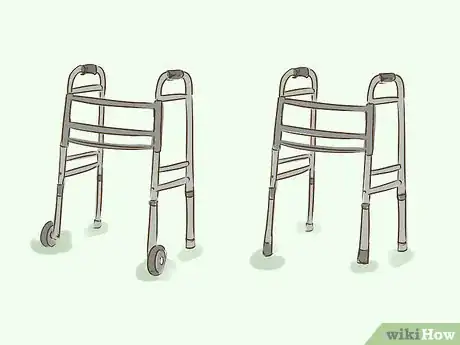
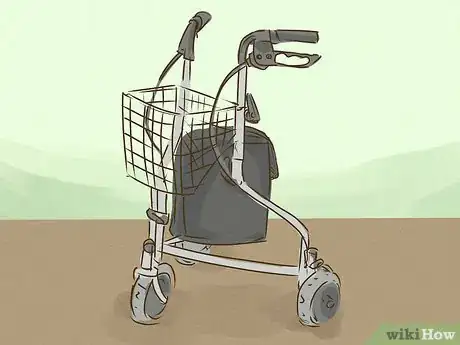
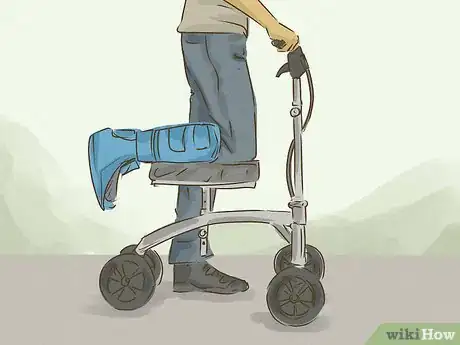


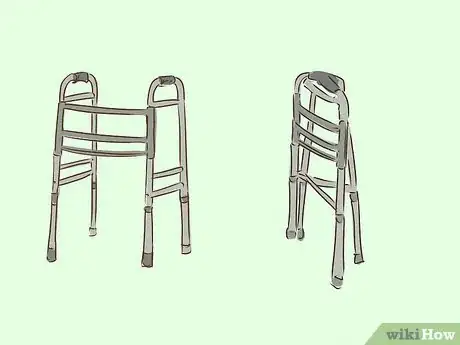
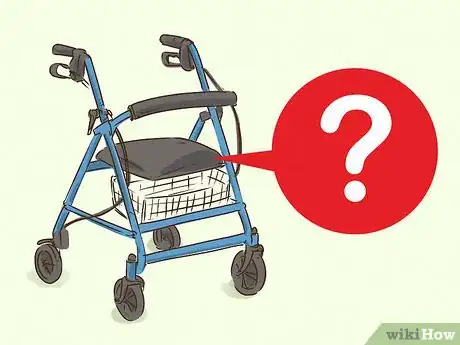
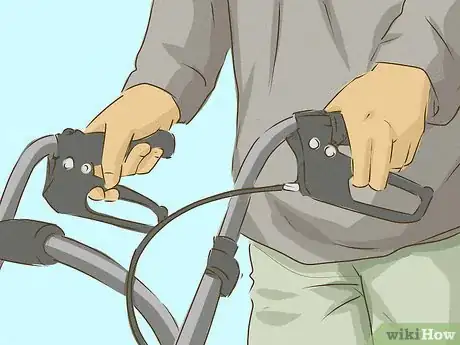
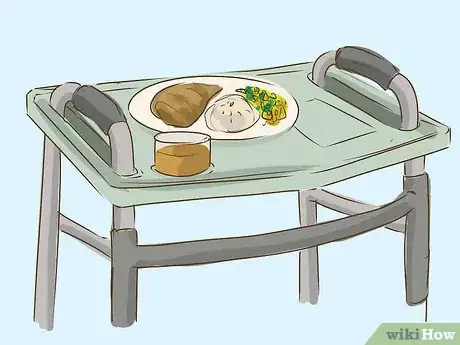
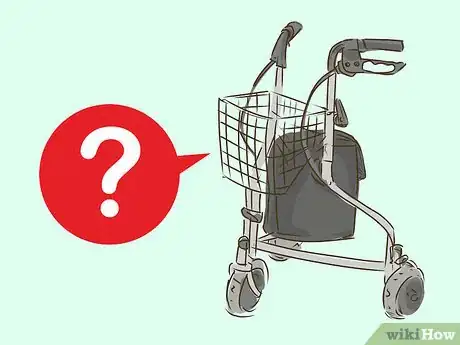







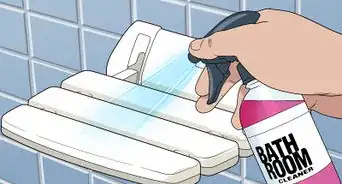













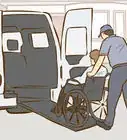



































Medical Disclaimer
The content of this article is not intended to be a substitute for professional medical advice, examination, diagnosis, or treatment. You should always contact your doctor or other qualified healthcare professional before starting, changing, or stopping any kind of health treatment.
Read More...